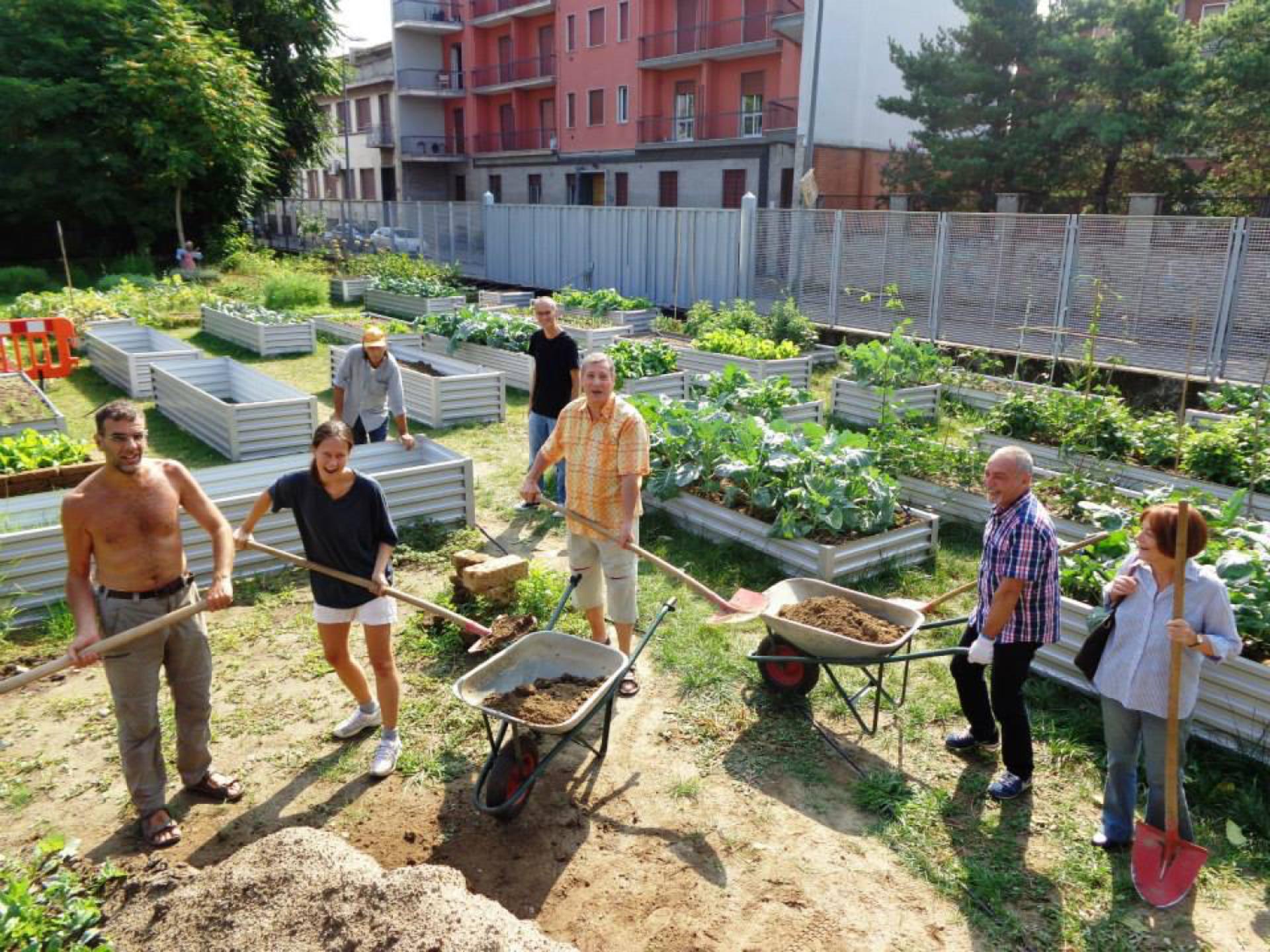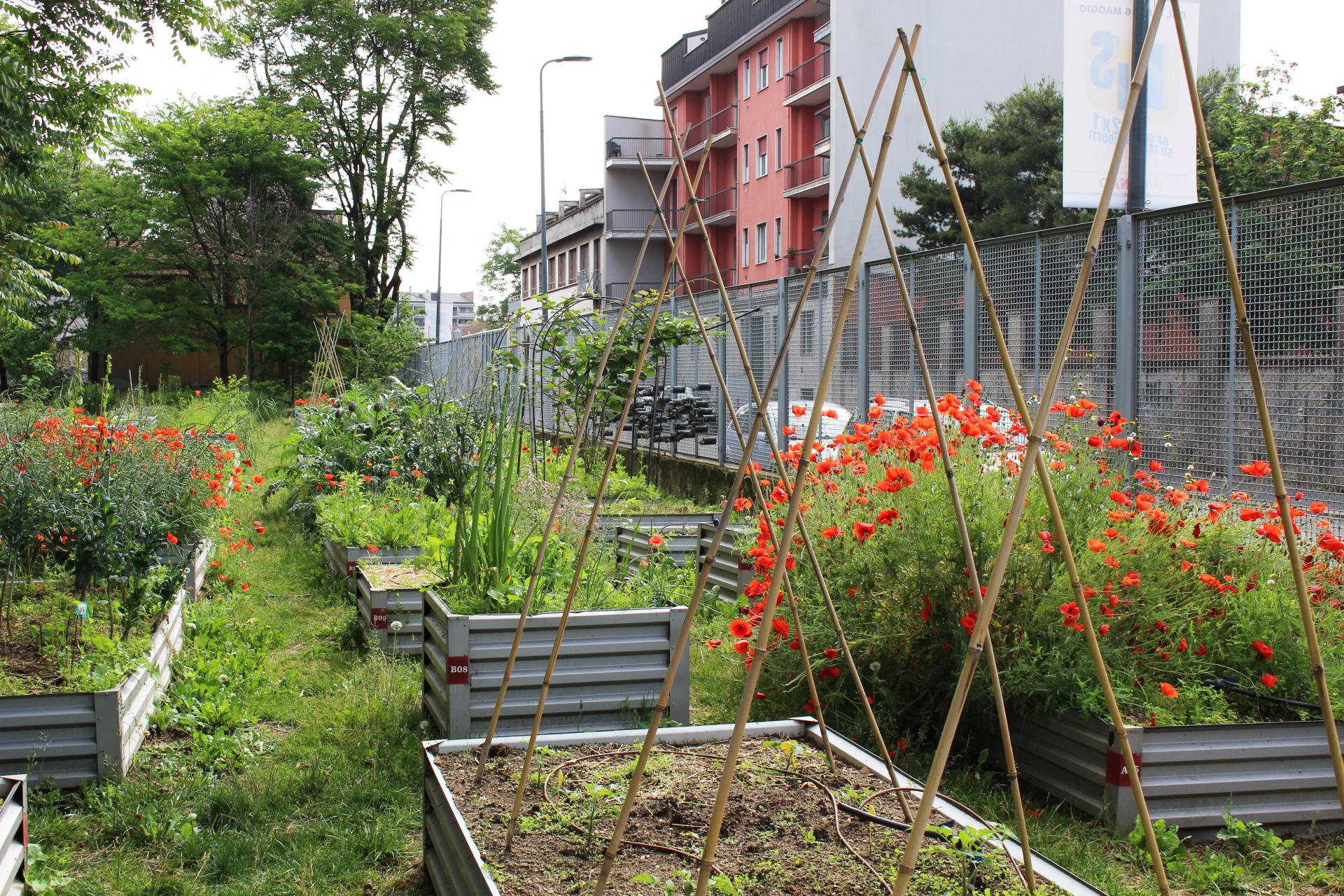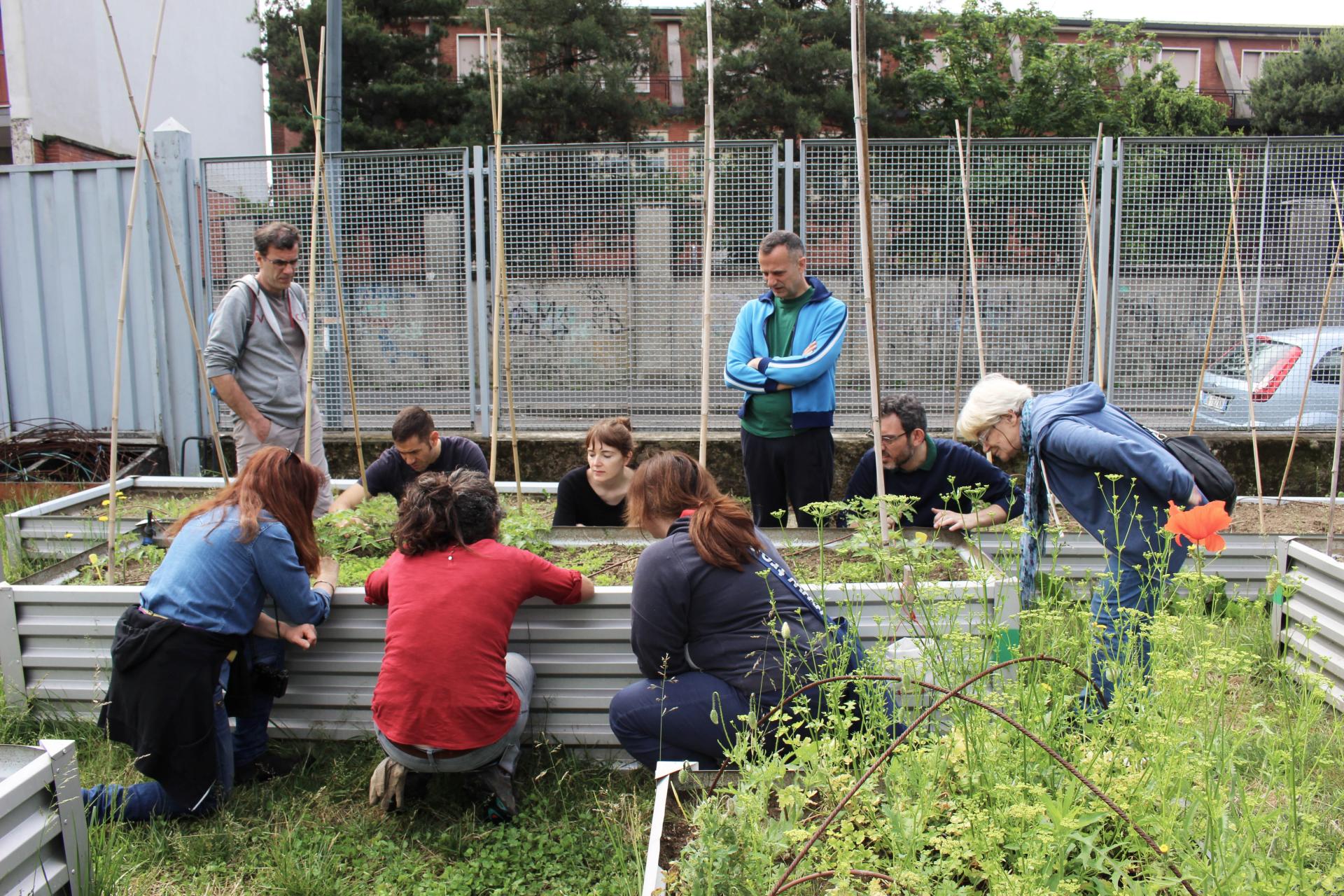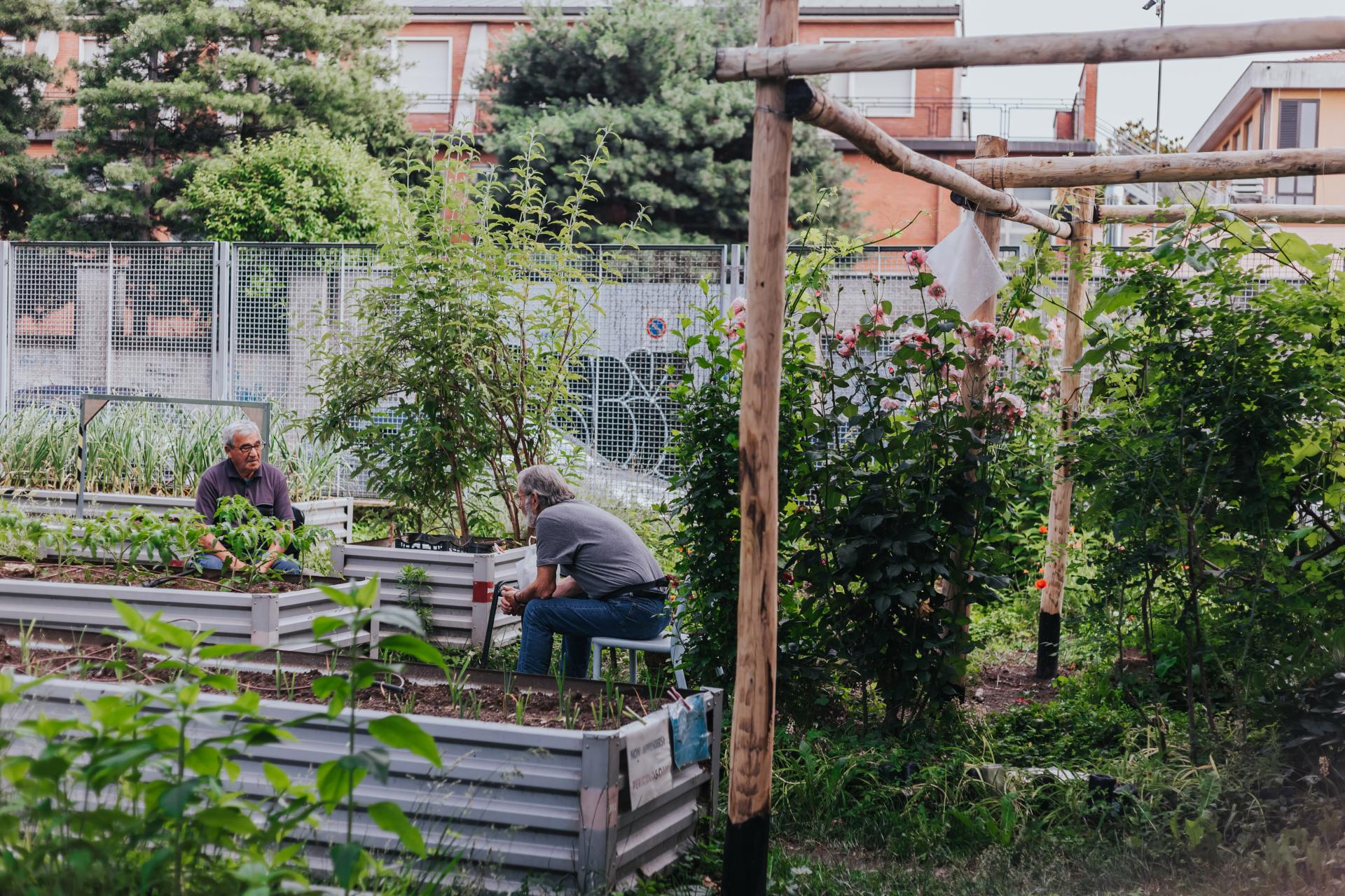Coltivando
Basic information
Project Title
Full project title
Category
Project Description
Coltivando is a community garden within the Politecnico di Milano campus, co-designed by service and spatial design students and researcher and the local community of the "Bovisa" neighbourhood and today managed by a group of citizens in collaboration with the university. Built in 2012, it is a productive, didactic and meeting place where cultivate organic fruits and vegetables and collaborate with local associations and commercial activities.
Project Region
EU Programme or fund
Which funds
Other Funds
Human Cities - Reclaiming public space. Funded by European Commission's Culture Program (2010-12)
Description of the project
Summary
Coltivando is a convivial, sociable community garden within the boundaries of a public university (Politecnico di Milano) where people from the university and the neighbourhood meet, experiment, cultivate the crop, and share their skills and ideas. Coltivando uses innovative design knowledge and community consultation processes. It is a design research, social and educational project. Conviviality conveys a sense of sociality and sharing knowledge. Such a concept is extended to the overall project through the multidisciplinary approach where designers from different backgrounds worked together to build a coherent system. In this project, conviviality embraces the participatory process of the co-design sessions that invited the community to share their ideas about the upcoming garden:
- in the location of the garden that blurs the borders of the campus and opens its gates to the neighbourhood, welcoming people outside the university;
- in the system that hosts shared plots where every member of the community can take care;
- in the community, that always welcome new members without any specific enrolment procedure;
- in the layout of the space where the absence of any fence invites people to enjoy and respect the place.
Coltivando is designed to be a garden where the plots and all the spaces are shared within the community as a collaborative service. Every member has his/her duty to take care of everything, with some members chosen among the others to coordinate some specific tasks, such as seed planning, watering plants, maintenance of garden tools, when and how to harvest, and communication. Problems, decisions and assignments are shared with the whole of the community.
Key objectives for sustainability
Coltivando is a service and a space for urban agriculture with zero-mile food production. People working at Coltivando bring home their food as much as they need. Also, they support the sharing of food by eating together every Saturday at lunch, with coursed made of the garden's vegetables. The environmental impact of Coltivando is measurable in terms of introduced biodiversity, environmental sustainability of the hardware component of the project, the adoption of best practices in the use of natural resources, food self-sufficiency and activated social sustainability. The cultivation of more than fifty different types of vegetables and fruits generated biodiversity in the existing ecosystem that is visible through the activity of several species of insects, the arrival of bees and earthworms in the soil. The system of garden beds (made from only one material, i.e. galvanized sheet metal) and the compost area and the irrigation system were co-designed following the principle of total disassembly and subsequent recycling or storage of the components. A set of bins is located in the garden produced compost to use to fertilize the garden. Food production has ensured self-sufficiency in vegetables for twenty people and has spawned a generational mix of participants as an outcome of the social cohesion produced. Further, hops is cultivated, and a partnership with a local brewery led to the production of a beer that sells provide funding for Coltivando's maintenance.
Key objectives for aesthetics and quality
Coltivando area had been recovered as a public green area in the spring of 2011 by the Politecnico di Milano, on an abandoned place. The internal community of the university little used the new green grass place because it was considered too far from the office buildings and classrooms, and it was not used by the neighbourhood either, because it was deemed inaccessible as “it belongs to university”. The project started with the idea of making this area into a meeting place by cultivating vegetables and knowledge, relationships, and friendships. The gate that separates the roadway from the campus is a porous border where it is possible to view inside, creating direct contact between the two public places. The neighbourhood and the campus. Starting from the input of Milanese legislation that requires urban community gardens to find solutions that do not use the existing soil, spatial design has created a three-dimensional network of devices using the ground only as support:
- boxes for gardening and compost made of steel in the central part and tuff on the sides. They are designed to be dry assembled to be easily set up and dismantled/recycled (when needed);
- rest areas: multifunctional areas that in future could be used for cooking, didactic activities etc.;
- sheds for gardening tools
The boxes are located in a grid, reminiscent of the Roman “cardo” and “decumanus”, avoiding physical boundaries and allowing easy access to this area. The perpendicular path generates a serial space that could be repeated endlessly.
Coltivando has been conceived as a collaborative service experiment based on collaboration within the community and shared allotment care, focusing on working together and encouraging people to meet and share the crops every week. Knowledge exchange, learning process, sharing skills enrich the experience the gardeners have week by week by strengthening the link with the place and reinforcing the sense of community.
Key objectives for inclusion
Coltivando community puts together singles, families with kids, retired with students and staff from Politecnico. They belong to an open society: everyone can join the community by helping the garden's works. Gardening is the driver that brings people to the place: taking care of a piece of land, forcing people to come back regularly, and meeting the neighbours, strengthening the community sense. The main focus in the creation of the community of Coltivando was to initiate a process of reunification between two groups of users in the "Bovisa" district that for years had not had any interaction: the inhabitants of the district on one side and the students, staff and faculty of the Politecnico di Milano on the other. Now, the university community inhabits its workspace as commutes, during working hours, and has become part of a larger group through interacting with residents. On the other hand, people living in this area have an insight into university life, its people and places, and are involved in activities that could improve their quality of life.
The use of a convivial garden as a tool for reunification has excellent potential in the formation of a community: the act of building and then sowing, cultivating and taking care of the plants, as well as harvesting the food produced – all collectively contribute to strengthening ties within the community that is being created while at the same time, the opportunity for individuals to become self-sufficient in the production of fruit and vegetables is created. One year after the opening, the community of Coltivando totals twenty permanent members with an ever-increasing number of visitors who occasionally participate in maintenance activities and take advantage of the opportunity to spend some time in and enjoy a public green area.
Results in relation to category
Coltivando aims to create a ‘place’ which people who work and study at the university can enjoy and at the same time people who live nearby could come and enjoy it too. Thus Coltivando has three separate but merging aims:
- social: to enable two kinds of community to make contact (university and neighbourhood) to add value to the campus and the district. On the one hand, the university community will live its workspace not only as a commuter does, only in working hours, but as part of a larger group intermingling with urban residents. On the other, people living in the Bovisa area could get to know the university life, people and places better and be involved in activities that could improve their quality of life;
- spatial: dedicating some of the green areas on the Bovisa Campus to a gardening activity means giving a new function to a place and designing spatial solutions from the disciplines taught in the Politecnico di Milano (Design, Architecture and Engineering). The campus has been built by renovating a former industrial area where most of the locals were working at the beginning of the last century. By giving access again to those spaces, Coltivando adds a new value to the area;
- productive: gardening means first and foremost producing food and, in this case, means trying to let the community of 25 people who will take care of Coltivando be self-sufficient in terms of vegetables and fruit.
How Citizens benefit
The use of a convivial garden as a tool for reunification has excellent potential in the formation of a community: the act of building and then sowing, cultivating and taking care of the plants, as well as harvesting the food produced, all collectively contribute to strengthening ties within the community that is being created, while at the same time, the opportunity for individuals to become self-sufficient in the production of fruit and vegetables is created. After almost ten years from the opening, the community of Coltivando totals twenty-five to thirty permanent members with an ever-increasing number of visitors who occasionally participate in maintenance activities and take advantage of the opportunity to spend some time in and enjoy a public green area.
The organisation of the community of Coltivando has been one of the main focuses of the design research project: to set up an independent group where members can self-regulate and manage critical issues that arise. A strategy was employed to designate coordinators for different activities such as collecting the seeds, compost and irrigation, and communication management. These coordinators became the reference points for other members for technical and practical support. This was important, as the group of people who attend the garden is very heterogeneous regarding social and professional backgrounds and personal experience. The approach has created a dynamic organism capable of creating new incentives and an intense exchange of knowledge.
Innovative character
Use of public space
Open up university spaces to a larger audience by boosting the interaction between a “hidden public space” such as a university campus and potential new users (citizens of the neighbourhood). This space allows the district to have a new meeting place in an edible green area.
Community building
Using a community garden as a tool for social inclusion and formation of a community: the act of co-designing, building and then sowing, cultivating and taking care of the plants, as well as harvesting the food produced, all collectively contribute to strengthening ties within the community that is being created, while at the same time, the opportunity for individuals to become self-sufficient in the production of fruit and vegetables is created.
Transdisciplinary approach
Spatial and service design was used in the design phase to provide solutions by merging two fields of the same discipline. Such an approach gave the students and teachers involved a rare opportunity to develop a more holistic solution. The educational side was enriched by the cross-fertilisation of some design tools traditionally adopted by one or the other perspective.
In-the-field activities
Both researchers and students had the opportunity to engage with a real project from concept to implementation. With Coltivando, they were forced to talk to real stakeholders, to network with local gardeners and local authorities, to ask about providers and their costs.
Intertwining partnerships
Coltivando has developed several collaborations throughout the years, including:
- - primary and middle schools to implement gardening solutions in their places,
- - other Milanese community gardens to reinforce the network of knowledge and experiences,
- - a local brewery where to produce a beer with the hops cultivated in its place,
and during the Covid-19 emergency, the weekly offer of boxes of fresh vegetables and fruits to a charity association to be delivered





